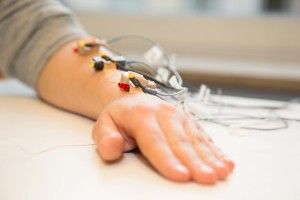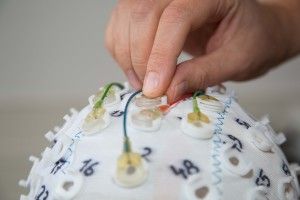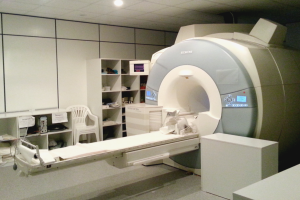Motion tracking
In the empirical measurement of motion, small infra-red (IR) light emitting diodes (LED) are attached to the body and illuminated. The light impulses are recorded by means of a camera system, allowing us to characterize body movements in 3D space. The analysis of movement parameters, such as movement time, end point, maximal velocity, or the time/ spatial location of an in-flight directional change, is informative as to how the brain plans movements in a variety of experimental settings.


EEG
The electroencephalogram (EEG) is recorded at the scalp surface and measures the electrical activity of the brain. Analyzing EEG allows us to investigate brain processes with a high temporal resolution. A high temporal resolution is necessary to look at evoked and induced oscillatory activity during different sensory-motor tasks employed in our lab. For more information about EEG, click here.
fMRI
Functional magnetic resonance imaging (fMRI) is a non-invasive imaging method to measure blood flow changes in the brain. Researchers assume that blood level oxygenation is a proxy for neuronal processing, allowing us to characterize which processes brain regions are involved in, their connectivity to other regions, and what kind of coding a region uses with high spatial resolution across the course of an experimental task.
